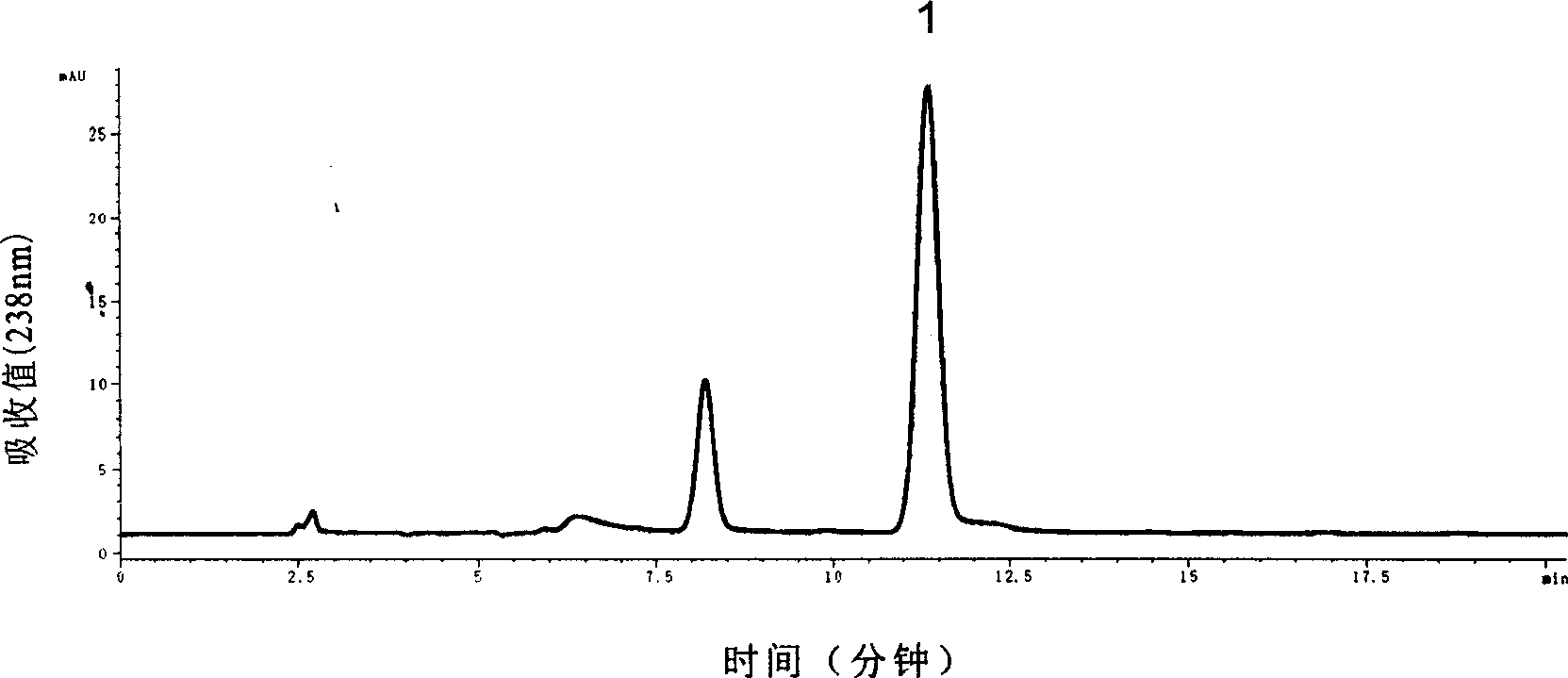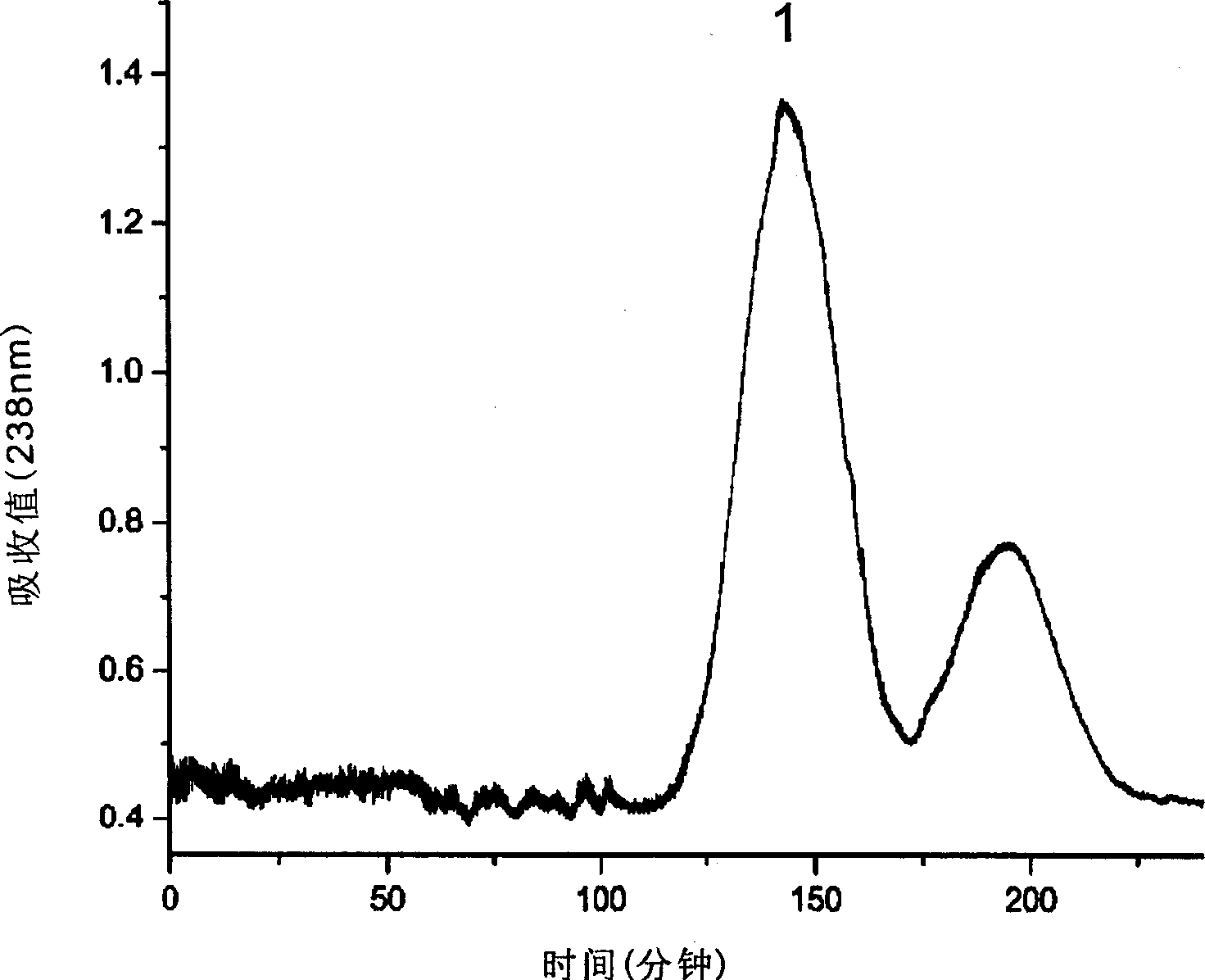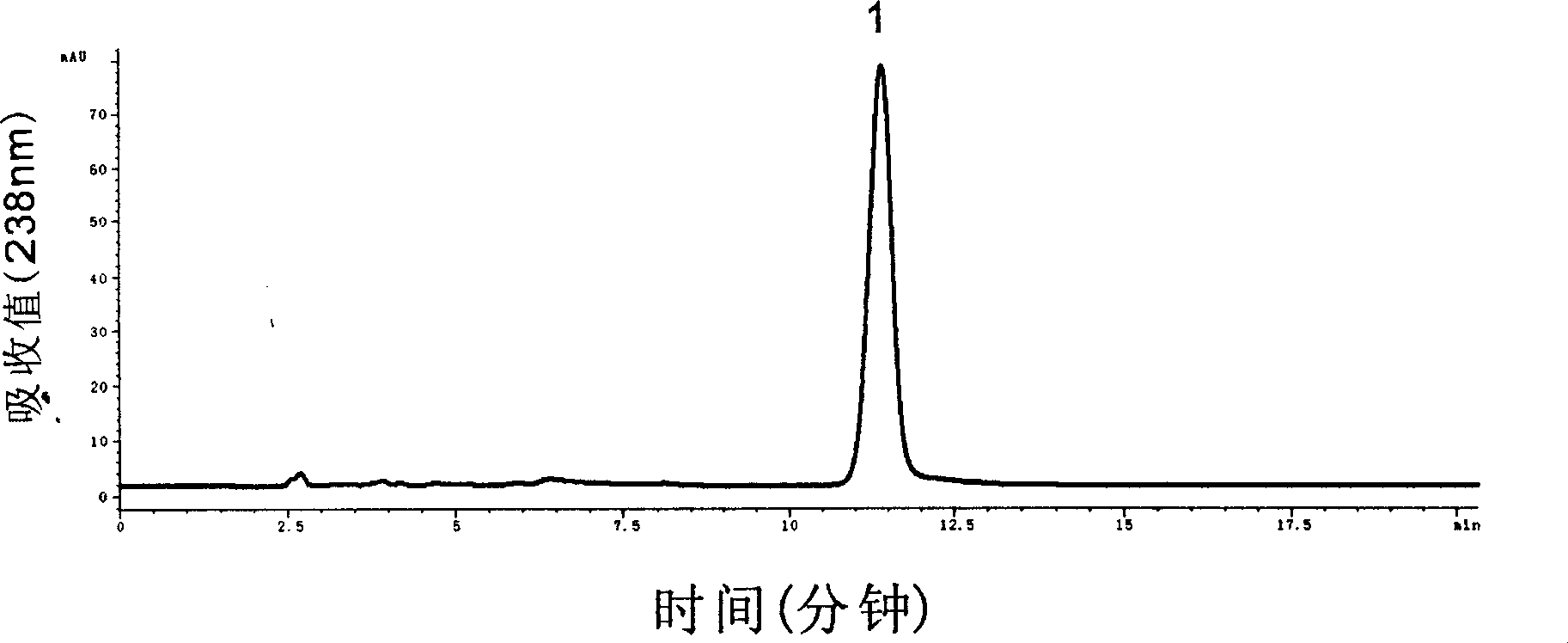Method for separating rubescensinA from rabdosia
A technology of Rubescensin A and Rubescensin, which is applied in the field of separating and preparing monomer Rubescensin A from the crude product of Rubescensus A by countercurrent chromatography, and can solve the problem of unstable chemical properties of Rubescensin A, which is very difficult to solve. Difficult to obtain compound monomers, difficult separation work, etc., to achieve the effect of peak resolution, large separation amount, and solvent saving
- Summary
- Abstract
- Description
- Claims
- Application Information
AI Technical Summary
Problems solved by technology
Method used
Image
Examples
Embodiment 1
[0020] 1. Heat and reflux 5kg of dried Radix Herba radix with 10L of 95% ethanol for 3 times, each time for 2 hours, filter out the solvent, add 10L of 95% ethanol to the filter residue, repeat the above operation three times, and dissolve the extract Combined and concentrated under reduced pressure with a vacuum rotary evaporator to form an extract, the concentration temperature is 40°C, and after drying, 200g of Oridinus crude product is obtained. The resulting crude product is subjected to normal phase silica gel column chromatography, the column size is: 150cm × 8cm, and the volume ratio of petroleum ether and acetone is 8:1, 6:1, 4:1, 2:1, 1:1. Elution, the flow rate is 10-15ml / min, obtains the crude product of oridonin, and its HPLC analysis is as follows: figure 1 As shown, the content of oridonin was 65.8%.
[0021] 2. Separation of Rubescensin A extract by countercurrent chromatography. Use n-hexane, ethyl acetate, methanol and water to prepare a two-phase solvent i...
Embodiment 2
[0023] The crude product of oridonin was prepared in the same manner as in Example 1, and the extract of oridonin was separated by countercurrent chromatography. Use petroleum ether, ethyl acetate, ethanol and water to prepare a two-phase solvent in a volume ratio of 1.5:2.5:1.5:2.5, put it in a liquid separation container to separate layers, and separate the upper and lower phases. Dissolve 300 mg of crude oridonin A in 8 ml of the upper phase and 8 ml of the lower phase to form a sample solution. The internal diameter of the countercurrent chromatographic column is 2.6mm, and the column volume is 850ml. The above phase is used as the stationary phase, and the lower phase is the mobile phase. After the separation column of the countercurrent chromatograph is filled with the stationary phase, the sample solution is injected into the sampling loop of the countercurrent chromatograph, and the countercurrent chromatograph is turned on at a speed of 500 rpm. The flow rate of 3ml / ...
Embodiment 3
[0025] The crude product of oridonin was prepared in the same manner as in Example 1, and the extract of oridonin was separated by countercurrent chromatography. Use chloroform, methanol and water to prepare a two-phase solvent in a volume ratio of 4:3:2, put it in a liquid separation container and separate the layers to separate the upper and lower phases. Dissolve 150 mg of crude oridonin A in 5 ml of the upper phase and 5 ml of the lower phase to form a sample solution. The internal diameter of the countercurrent chromatographic column is 1.6mm, and the column volume is 320ml. The above phase is used as the stationary phase, and the lower phase is the mobile phase. After the separation column of the countercurrent chromatograph is filled with the stationary phase, the sample solution is injected into the sampling loop of the countercurrent chromatograph, and the countercurrent chromatograph is turned on at a speed of 800 rpm. The flow rate of 1.5ml / min was injected into th...
PUM
 Login to View More
Login to View More Abstract
Description
Claims
Application Information
 Login to View More
Login to View More - R&D
- Intellectual Property
- Life Sciences
- Materials
- Tech Scout
- Unparalleled Data Quality
- Higher Quality Content
- 60% Fewer Hallucinations
Browse by: Latest US Patents, China's latest patents, Technical Efficacy Thesaurus, Application Domain, Technology Topic, Popular Technical Reports.
© 2025 PatSnap. All rights reserved.Legal|Privacy policy|Modern Slavery Act Transparency Statement|Sitemap|About US| Contact US: help@patsnap.com



